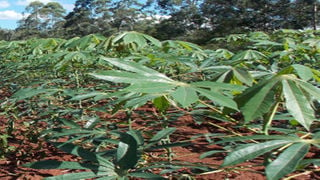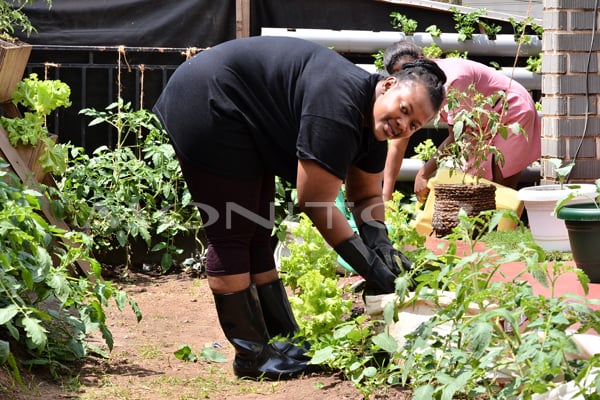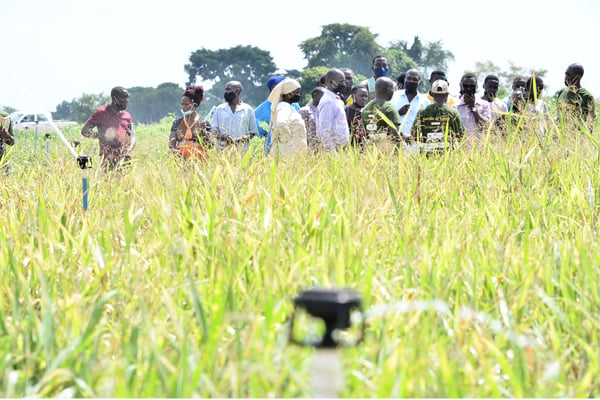
Farmers are advised to create space between the rows for easy weeding. PHOTO/SHABIBAH NAKIRIGYA
|Farming
Prime
How to plant cassava this rainy season
What you need to know:
- Weeding your cassava plantation is so important during the early stages.
- It is good to interplant your cassava with other crops such as beans during early stages to suppress the weeds you need to weed three to four weeks after planting.
According to meteorological experts, the first rainy season of 2022 is expected to start later this month.
While predicting the rains, the weatherman advises farmers who depend on rain-fed agriculture to prepare their fields and plant only when the rains have started.
Most farmers Seeds of Gold has interviewed ahead of the season, say cassava is among the crops they are planning to plant. Whatever your quest about cassava growing, the guide below will help you get some answers and you will be one step ahead of the pack of many farmers who start without planning.
Background
Cassava is a perennial shrub, which produces enlarged tuberous roots. When mature, its height ranges from about one to three metres or more.
The stems are usually small and glabrous with nodes. The leaves vary in colour from green to reddish. There is a great variation in tuber number, shape and size and the angle at which they penetrate the ground.
ALSO READ: How you can start cassava farming
Each cassava plant usually bears between five and 10 tubers. A compound called hydrocyanic glycoside is present in each cassava variety at varying quantities and it is this compound which makes the tuber sour sometimes. Cassava clones are often classified by taste ‘sweet’ or ‘bitter’.
Classification
East Africa has several cassava varieties. These do have different attributes, such as their difference in softness, sweetness, and maturity period, susceptibility to pests and diseases, and tuber yields.
The current new varieties are NASE1 to 12 however, NASE (1, 2, 3 and 4) are tolerant to drought, resistant to mosaic and very high yielding.
Conditions
Your cassava will require optimum temperatures ranging from 25-30°C with a minimum temperature of 18°c.
This explains the fall in yields where temperatures are above 30°C.
A well distributed annual rainfall of 1000 and 1500mm is ideal but the crop can successfully grow in areas with rainfall ranging from 500 and 2500mm. Soil; light sandy loam soils with medium fertility give the best result.
ALSO READ: Ways to get high yields from cassava
Although the crop can tolerate soils of low fertility, especially if feeder roots can penetrate deeper, deep cultivation before planting is recommended.
What to plant on cassava
Cassava is propagated by cuttings got from a cassava plant stem. To make cuttings, choose stems 2 to 4cm thick, from the strongest plants which are not diseased and have already produced tubers. After the harvest, tie the selected stems in bundles, wait for at least 10 days before planting them.
Keep the bundles in a cool, dry place until planting time. But remember that the cuttings must not be made from the stem until you are ready to plant. Cut each stem into pieces 20 to 30cm long. There should be between four and six grown buds on each piece.
How to plant your cassava
In most East African countries cassava is still planted by hand. And planting is done at the onset of the rain season, often in flat fields, though planting on ridges is desirable in wet regions. You can cut the sticks obliquely or at a right angle to the stem being cut. You can then plant your cutting vertically or at an angle, with half their length in the soil, or flat below the surface.
How to weed cassava in Uganda
Weeding your cassava plantation is so important during the early stages. It is good to interplant your cassava with other crops such as beans during early stages to suppress the weeds you need to weed three to four weeks after planting. Earth up plants (add soil on plants) during weeding as this greatly helps in tuber formation. You may also use some chemicals to control weeds.
Growth period
Generally cassava reaches maturity in 9-24 months or up to 36 months depending on the variety, climate and soil conditions. Some quick growing cultivars can be harvested in 6-7 months, but good yields are normally obtained after 9-12 months.
ALSO READ: How Akuttu makes Shs100m from cassava
When used fresh, the tubers are normally only obtained after 9-12 months, otherwise they become very fibrous.
About ratooning in Cassava
After six months your cassava stems are old enough to be cut and planted elsewhere. The stem is cut without up-rooting the cassava. You can plant the healthy stems to other fields or sell them to other farmers. Fresh vegetative parts will grow within weeks.
Quick tips
• Cut selected cassava stems for planting in to either 2 node or 3 node pieces.
• Treat steaks with available pesticide or fungicide before planting.
• Locally you can use Neem leaf powder. In five litres of water add one kilogrammes of the powder.
• Measure out the required quantity and then put the stakes in to the solution for 10 minutes.
• For the two node stakes keep them in transparent polythene to germinate for 10 days then transfer to the field.
Harvest
Depending on the variety, harvesting cassava for food could begin from the 7th month after planting for early maturing varieties; or after the 10th month for late varieties.
For a smallholder farmer you can harvest the tubers as you need them; without cutting the stems, begin by taking the biggest tubers from each plant, leaving the small ones to give them time to fill up.
Beware of cassava diseases
Cassava brown streak disease (CBSD) is a devastating disease that is hampering cassava yield in most African countries especially in East Africa. In some cases, the disease exposes farmers to 100 percent loss.
CBSD causes rotting of the storage roots rendering the spoilt roots inedible. The CBSD is caused by two viruses namely the Cassava Brown Streak Virus and the Ugandan Cassava Brown Streak Disease.
A virus cannot be seen by naked eyes and only survives inside a living organism. Currently the CBSD is present in Uganda, Kenya, Tanzania, Malawi, Mozambique and Rwanda.
Symptoms of CBSD can be observed on leaves, stems and cassava tuberous roots. While some varieties can show symptoms on leaves, stems and roots, others may only show symptoms on leaves and not on roots.
Some varieties do not show symptoms on leaves but on roots only. Symptoms are most visible in old cassava plants, especially on the lower mature leaves. It’s important to note that most young leaves at the tip of the plant do not show.
CBSD symptoms and therefore whenever old leaves drop off, the plants may appear healthy when in fact, they are diseased. The affected plants develop yellow lines or patches along the small veins within normal green leaf colour which is commonly known as chlorosis.
In mature cassava plants, the yellowing on the lower leaves becomes larger until most of the leaf is yellow and only the small veins remain green. Leaves showing CBSD symptoms retain their normal shape and are not deformed as is the case with Cassava Mosaic disease.
The stems of the affected plants develop dark brown streaks or lesions that appear as scratch like wounds in some varieties. These streaks can be most clearly seen on upper, young green portions of the stem.
In very susceptible varieties, the shoot tips may dry and fall off and this condition may progress to affect the whole cassava popularly known as ‘stem die-back’.
Eventually, the whole plant may dry and die.
On the cassava roots, the CBSD manifests itself through turning it brown, yellowish and hard. The brown and hard rot consisting of dead tissues becomes evident in the root.
In very susceptible varieties, CBSD causes deep constrictions, twisting and reduction in size of the storage roots. The outer skin of the storage roots may develop deep cracks on the surface. CBSD is spread mainly when cuttings taken from a diseased plant are used as planting material.
The new plants that sprout will have CBSD. The viruses are spread from one plant to another by small white insects called whiteflies just the way malaria parasite is carried by mosquitoes. Whiteflies feed on the sap in cassava leaves, just like mosquitoes feed on human blood. The virus lives in the sap of the plant- Additional reporting by Charles Tabu.




